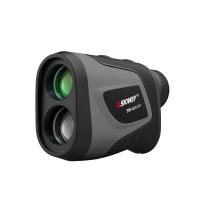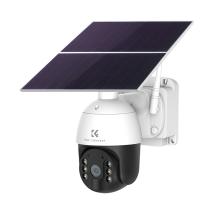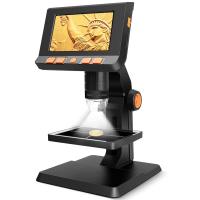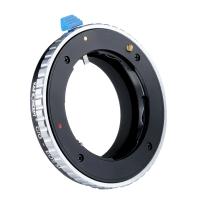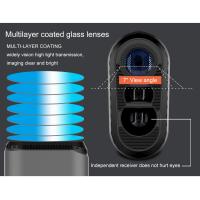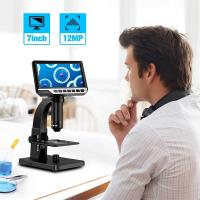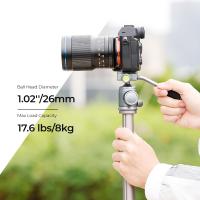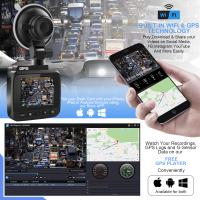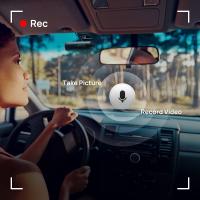What Is The Use Of Digital Camera ?
A digital camera is a device used to capture and store photographs and videos in a digital format. It is widely used for personal and professional purposes, allowing users to easily capture, view, edit, and share their images. Digital cameras have replaced traditional film cameras due to their convenience and numerous advantages. They offer instant feedback, as users can immediately view the captured image on the camera's LCD screen, allowing for adjustments and retakes if necessary. Digital cameras also provide the ability to store a large number of photos on memory cards, eliminating the need for physical film rolls. Additionally, digital cameras offer various features and settings, such as different shooting modes, manual controls, and image stabilization, allowing users to have more control over their photography. With the advancement of technology, digital cameras have become more compact, affordable, and capable of capturing high-quality images, making them a popular choice for both amateurs and professionals.
1、 Image capture and storage
The use of a digital camera primarily revolves around image capture and storage. Digital cameras have revolutionized the way we capture and preserve memories, allowing us to take high-quality photographs and store them digitally.
One of the key advantages of digital cameras is their ability to capture images instantly. Unlike traditional film cameras, digital cameras provide immediate feedback, allowing users to review and retake photos if necessary. This real-time feedback enables photographers to experiment with different settings and compositions, enhancing their skills and creativity.
Furthermore, digital cameras offer a vast storage capacity, allowing users to capture and store a large number of images. With the advancement of technology, digital cameras now come with high-resolution sensors, enabling the capture of detailed and vibrant photographs. Additionally, digital cameras often have built-in memory or support external memory cards, providing ample space to store thousands of images.
Moreover, digital cameras offer the convenience of easy image transfer and sharing. With the integration of Wi-Fi and Bluetooth technology, users can quickly transfer photos to their smartphones, tablets, or computers. This enables instant sharing on social media platforms, allowing users to showcase their work to a wider audience.
In recent years, digital cameras have also witnessed advancements in features such as image stabilization, low-light performance, and video recording capabilities. These improvements have made digital cameras more versatile, catering to a wide range of photography needs.
In conclusion, the use of a digital camera primarily revolves around image capture and storage. However, with technological advancements, digital cameras have become more than just a tool for capturing memories. They offer convenience, versatility, and the ability to instantly share photographs, making them an essential device for both amateur and professional photographers.

2、 High-resolution photography
The use of a digital camera, particularly in the context of high-resolution photography, is multifaceted and has revolutionized the way we capture and preserve images. With the advancement of technology, digital cameras have become increasingly popular due to their convenience, versatility, and ability to produce high-quality photographs.
One of the primary uses of a digital camera is to capture images with exceptional clarity and detail. High-resolution photography allows for the capture of images with a greater number of pixels, resulting in sharper and more lifelike photographs. This is particularly beneficial for professional photographers, as it enables them to produce images that can be enlarged or printed without compromising on quality.
Moreover, digital cameras offer a range of features and settings that allow photographers to experiment with different techniques and styles. From manual controls to various shooting modes, photographers have the flexibility to adjust settings such as aperture, shutter speed, and ISO to achieve the desired effect. This level of control empowers photographers to unleash their creativity and capture images that truly reflect their vision.
Additionally, digital cameras offer the advantage of instant feedback. Unlike traditional film cameras, where one had to wait for the film to be developed, digital cameras allow photographers to review their images immediately after capturing them. This instant feedback enables photographers to make adjustments on the spot, ensuring that they capture the perfect shot.
Furthermore, digital cameras have made it easier than ever to share and store photographs. With the rise of social media platforms and online galleries, photographers can showcase their work to a wider audience and receive instant feedback and recognition. Additionally, digital cameras allow for easy transfer of images to computers or other devices, ensuring that precious memories are safely stored and easily accessible.
In recent years, the use of digital cameras has expanded beyond traditional photography. Many digital cameras now offer video recording capabilities, allowing users to capture high-quality videos as well. This has opened up new avenues for creative expression and storytelling, as individuals can now capture both still images and moving visuals with a single device.
In conclusion, the use of a digital camera, especially in the realm of high-resolution photography, offers numerous benefits. From capturing images with exceptional clarity and detail to providing instant feedback and enabling easy sharing and storage, digital cameras have transformed the way we capture and preserve memories. With the continuous advancements in technology, the possibilities for digital photography are only expanding, making it an exciting and essential tool for photographers of all levels.

3、 Versatile shooting modes and settings
The use of a digital camera goes far beyond simply capturing images. One of the key advantages of a digital camera is its versatile shooting modes and settings, which allow photographers to have complete control over their images. These modes and settings enable photographers to experiment with different techniques and styles, resulting in unique and creative photographs.
Digital cameras offer a wide range of shooting modes such as portrait, landscape, sports, macro, and night mode, among others. Each mode is specifically designed to optimize the camera settings for a particular type of photography, ensuring that the photographer achieves the desired results. For instance, the portrait mode enhances skin tones and blurs the background, while the landscape mode emphasizes sharpness and depth of field.
In addition to shooting modes, digital cameras also provide various settings that can be adjusted to suit different shooting conditions. These settings include ISO, aperture, shutter speed, white balance, and exposure compensation, among others. By manipulating these settings, photographers can control the amount of light entering the camera, the depth of field, and the overall exposure of the image. This level of control allows photographers to capture images in challenging lighting conditions or to create specific artistic effects.
Furthermore, the latest digital cameras often come equipped with advanced features such as high-resolution sensors, fast autofocus systems, and image stabilization technology. These features enhance the overall image quality and make it easier for photographers to capture sharp and clear images, even in fast-paced or low-light situations.
In conclusion, the use of a digital camera extends beyond simply taking pictures. The versatile shooting modes and settings offered by digital cameras allow photographers to explore their creativity and achieve their desired results. With the latest advancements in technology, digital cameras continue to evolve, providing photographers with even more tools and capabilities to capture stunning images.

4、 Instant image review and editing
The use of a digital camera goes far beyond simply capturing images. One of the most significant advantages of a digital camera is the ability to instantly review and edit images. Unlike traditional film cameras, where you had to wait until the film was developed to see the results, digital cameras allow you to see the image immediately after it is taken. This instant image review feature is incredibly useful as it allows photographers to assess the quality of the image, check for any errors or issues, and make adjustments on the spot.
Furthermore, digital cameras provide a range of editing options that were previously only available through specialized software on a computer. With the advancement of technology, many digital cameras now offer built-in editing features, such as cropping, adjusting exposure, enhancing colors, and applying filters. This allows photographers to make quick edits and improvements to their images without the need for additional equipment or software.
In addition to instant image review and editing, digital cameras also offer other benefits. They provide the convenience of storing hundreds, if not thousands, of images on a single memory card, eliminating the need for multiple rolls of film. Digital cameras also allow for easy sharing and printing of images, as they can be transferred directly to a computer or shared online.
From a latest point of view, digital cameras have continued to evolve and improve. They now offer higher resolutions, better image quality, and advanced features such as image stabilization, face detection, and wireless connectivity. These advancements have made digital cameras more versatile and user-friendly, catering to both amateur and professional photographers.
In conclusion, the use of a digital camera extends beyond capturing images. The ability to instantly review and edit images, along with the latest advancements in technology, make digital cameras an essential tool for photographers of all levels.

























